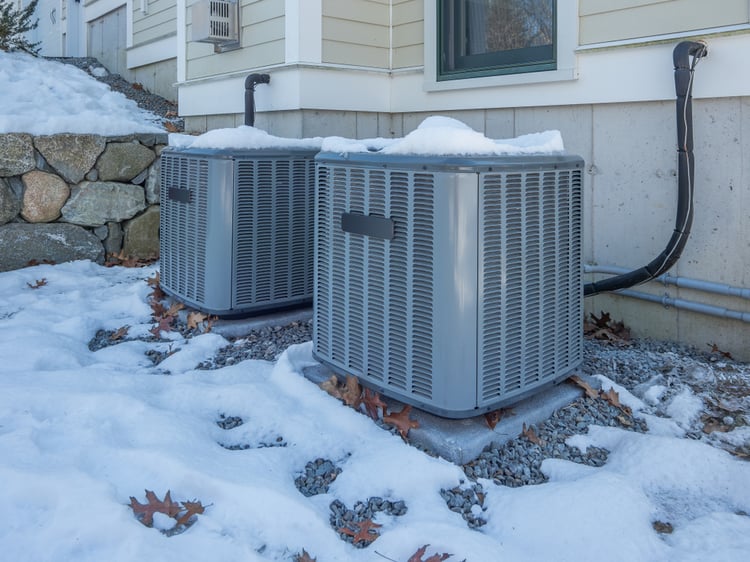Is Electric Heating Really Cleaner than Gas Heating? It Depends!

New York City enacted Introduction No. 2317-A on December 2021, and the new law prohibits fuels that release more than 25 kg of CO2 per million BTU in space heating and hot water systems. This requirement applies for new construction and major renovations. Since natural gas and heating oil are both above the limit, they have been essentially banned. This means building owners will need electric heating systems once the law comes into effect.
Int. No. 2317-A is also known as Local Law 154 of 2021, and the date when it applies for new constructions depends on their height. Buildings under seven stories must meet LL 154 if they are submitted after December 31, 2023, and buildings seven stories or taller must comply if submitted after July 1, 2027.
Get a renewable heating system design for your next construction project.
However, is electric heating really cleaner than gas heating? This is true when using clean sources like solar and wind power, but not when a grid depends on fossil fuel generation. In other words, electrification only reduces emissions from the building sector if energy companies transition to cleaner sources. Otherwise, emissions are simply being displaced from buildings to power plants.
How Does New York State Generate Electricity?

According to the US Energy Information Administration, the three main power sources in New York state are natural gas, nuclear power and hydroelectricity. These sources generate 90% of the electricity used in the state, while the remaining 10% comes from non-hydro renewables like solar and wind energy. Nuclear and hydroelectric power stations don’t release emissions while operating, but the same cannot be said of gas turbines.
- Natural gas is used in 5 of the 10 largest power stations in the state.
- Natural gas generated 40% of the electricity used by New York in 2020.
However, New York is among the most energy efficient states relative to its population. Energy consumption per capita is the third-lowest in the US, and only California and Rhode Island are more efficient. New York has an ambitious Clean Energy Standard, aiming for 70% renewable power by 2030 and 100% carbon-free power by 2040.
At the local level, New York City is taking aggressive measures to reduce its emissions. The Greener, Greater Buildings Plan (GGBP) was created more than a decade ago in 2009, and it included four laws:
- LL84/2009: Energy and water benchmarking for buildings
- LL85/2009: First version of the NYC Energy Conservation Code
- LL87/2009: Mandatory energy audits and retro-commissioning for buildings
- LL88/2009: Mandatory submetering and lighting upgrades
More recently, NYC introduced energy grades for buildings with LL33/2018, and emission limits for buildings over 25,000 sq.ft with LL97/2019. The latest addition to the list of climate-related laws is LL154/2021, which bans natural gas and higher-emission fuels in new constructions.
Making Sure That Electric Heating Systems Have Low Emissions

Electricity from the NYC grid has an emissions factor of 0.000288962 metric tons of CO2 equivalent per kilowatt-hour. This means an electric heating system that uses only power from the grid will produce almost 289 kg of CO2-eq for every 1,000 kWh consumed. However, this can be offset by using electric heat pumps instead of resistance heaters.
A resistance heater delivers one unit of heat per unit of electricity consumed. Using the example above, 1,000 kWh of electricity would be converted into 1,000 kWh of heat, which is equivalent to 3,412 kBTU. However, if an air source heat pump delivers 2.5 units of heat per unit of electricity, it can deliver 3,412 kBTU with only 400 kWh of electricity. In this case, energy consumption and the associated emissions have both been reduced by 60%. Using the emissions factor above, the following results are obtained:
- The resistance heater releases 288.96 kg of CO2-eq when providing 3,412 kBTU of heat.
- The heat pump only releases 115.58 kg of CO2-eq when providing the same heat output.
Of course, if 100% of the electricity comes from a clean source, both the resistance heater and the heat pump in the example above would have zero emissions. However, you can still save 60% of your operating costs with the heat pump. Even if you generate your own electricity onsite, electric heat pumps use the available capacity more efficiently.
To summarize, electric heating can be cleaner than natural gas heating, but only when power is generated with an energy source that has zero emissions or low emissions. Most power grids have a mix of sources, and the emissions factor will depend on the percentage of power that comes from fossil fuels. In this case, electric heat pumps can help compensate thanks to their lower kWh consumption.

Michael Tobias
Michael Tobias, the Founding Principal of NY Engineers, currently leads a team of 150+ MEP/FP engineers and has led over 4,000 projects in the US
Join 15,000+ Fellow Architects and Contractors
Get expert engineering tips straight to your inbox. Subscribe to the NY Engineers Blog below.

